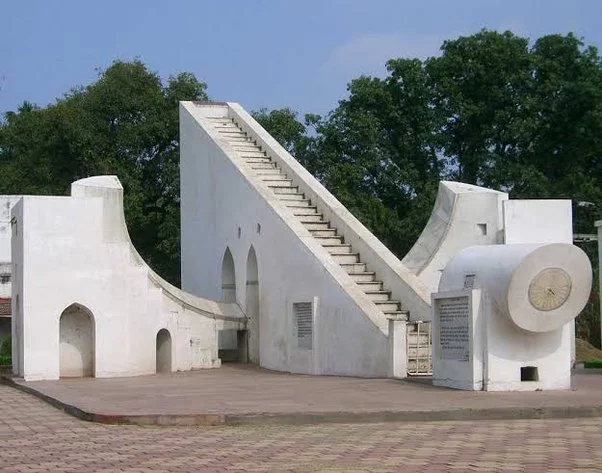
In the year 1884, Greenwich solidified its position as the prime meridian, becoming the international standard for 0° longitude and the epicenter for global timekeeping. However, long before Greenwich claimed this prestigious role, Ujjain, an ancient city in India, held the mantle as the central meridian for time within the Indian subcontinent. Even in contemporary Hindu almanacs, the time calculations are rooted in Ujjain time, persisting with a legacy that transcends centuries.
If you wish to delve into the secrets of Ujjain’s timekeeping techniques, the Vedshala, now known as the Government Jiwaji Observatory, stands as a living testament to this historical significance.
According to the Surya Siddhanta, an astronomical treatise from the 4th century, Ujjain is positioned precisely at the intersection of the zero meridian of longitude and the Tropic of Cancer. This unique geographical placement earned Ujjain the title of the “Greenwich of India,” signifying its pivotal role in timekeeping.
On a large globe outside the Vedshala, Ujjain’s location is pinpointed on the Tropic of Cancer, a latitude significant in marking the northernmost position where the sun is directly overhead. This imaginary line intersects the spire of the Mahakal Temple in Ujjain, connecting it with the Somnath Temple in Gujarat. Additionally, the Tropic of Cancer is believed to pass through Mangalnath Temple in Ujjain, considered the birthplace of Mars in Hindu cosmogony and the closest point to Mars from Earth.
The roots of this observatory trace back to the early 18th century when Maharaja Sawai Jai Singh II of Jaipur, a polymath with expertise in mathematics, architecture, and astronomy, recognized the need for educating the masses on astronomical calculations. Witnessing a heated debate in the Mughal court on this subject, he was prompted to build an observatory, creating the first Vedshala in Ujjain before those in Jaipur, Delhi, Mathura, and Varanasi.
However, Ujjain’s engagement with time goes beyond the construction of this observatory. Long before its establishment, the city was a renowned center for astronomy and mathematics in ancient India. The Surya Siddhanta, offering one of the earliest descriptions of standard time in India, placed the prime meridian through Avanti (Ujjain) and Rohitaka (Rohtak) in Haryana.
The Jyotisha vedanga, an ancient Indian text on astronomy, emphasized the crucial role of timekeeping in predicting auspicious days or times for Vedic rituals. Ujjain was home to prominent astronomers like Varahamihira, Brahmagupta, and Bhaskaracharya, solidifying its status as a hub for celestial studies. It was also in Ujjain that King Vikramaditya established the Vikram Samvat or the Ujjain calendar around 58–56 B.C., marking a new era.
Visiting the Vedshala offers a glimpse into the intricacies of ancient timekeeping. The instruments, known as yantras, work on the principle of casting shadows, measuring time, altitude, eclipses, and studying the motions and orbits of planets.
The Shankhu Yantra calculates the length of the day, marking the Tropic of Cancer, Tropic of Capricorn, and the Equator. The Samrat Yantra, or sundial, tells the time by casting shadows on parallel walls aligned with Earth’s axis tilt. The Digansha Yantra calculates the altitude and azimuth of celestial bodies, aiding in understanding planetary transits. The Nadi Valay Yantra determines whether a celestial body is in the northern or southern hemisphere based on its illumination by the sun.
Unique to Ujjain’s Vedshala, the Bhitti Yantra, or the transit instrument, measures the zenith distance of celestial bodies. Additionally, the Taramandel, a small planetarium, offers shows on planets, stars, constellations, and galaxies.
Built between 1725-30, the Ujjain observatory was renovated in 1923 by Maharaja Madhav Rao Scindia of Gwalior. Today, the observatory still conducts astronomical studies, and an ephemeris detailing the daily speed and position of planets is published annually.
It is said that on June 21, the day of the summer solstice. “For one brief minute, your own shadow will forsake you,” encapsulating the mystical allure of Ujjain’s celestial history. The Ujjain observatory, a custodian of time, charges a modest entry fee and invites visitors to experience the marvels of ancient astronomical wisdom.

